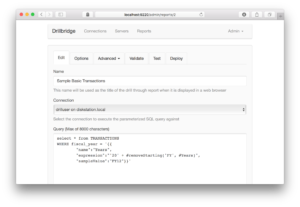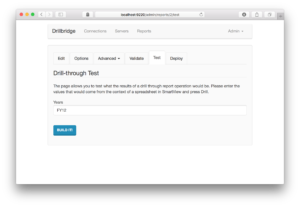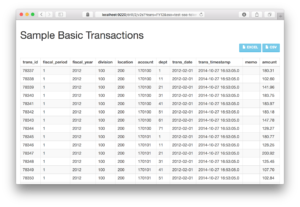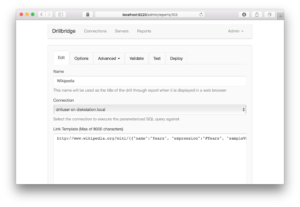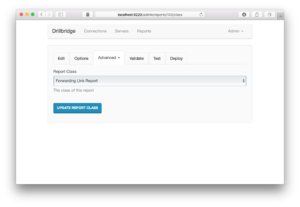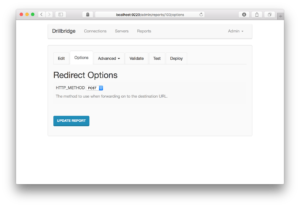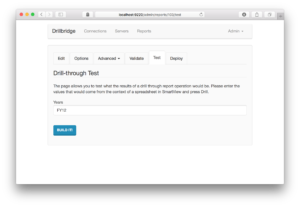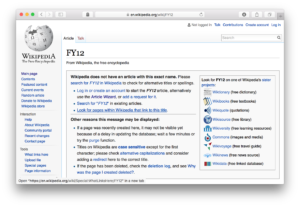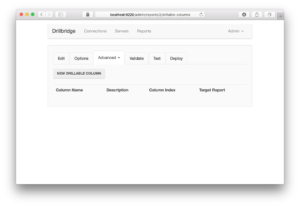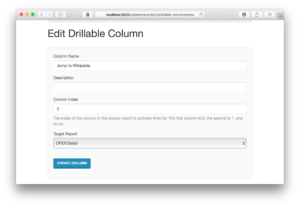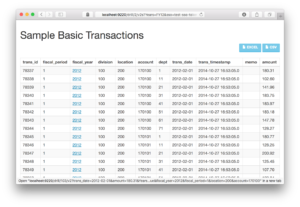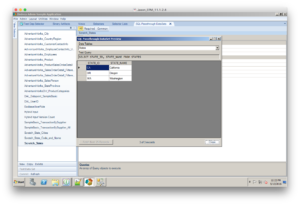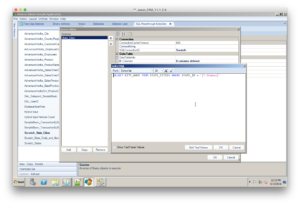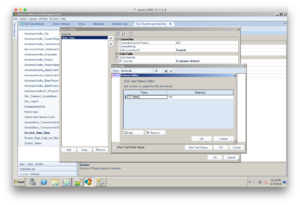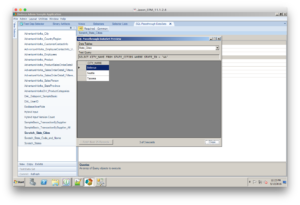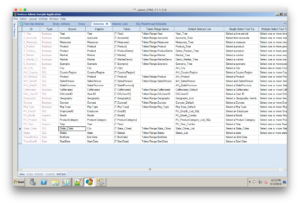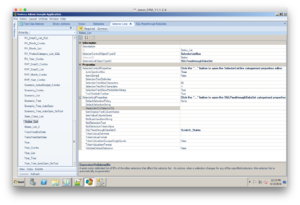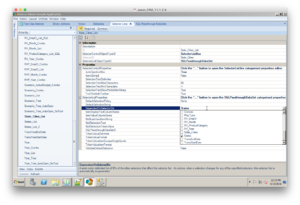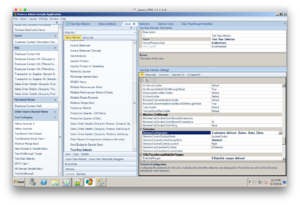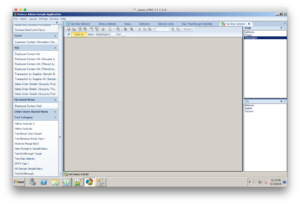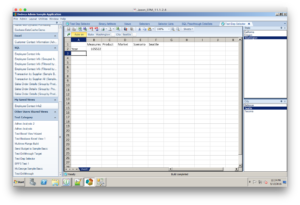One of the more often requests that Drillbridge users have is to be able to have drillable columns. That is, they’d like to drill from a column in a Drillbridge report by clicking on the column value and pulling up another report, using the point-of-view (POV) of the original cell. This is most often used in a few different situations:
- Drill into yet more detail for a given transaction
- Drill to a PDF or image related to the current item
- Drill to a custom URL, such as a Sharepoint URL
Drillbridge has supported this feature for quite some time, and it’s pretty easy to setup. Today I’m going to walk through the steps for setting up drillable columns in the latest version of Drillbridge Enterprise.
First of all, let’s take a look at a generic Drillbridge report that executes a query by converting the member from the Years dimension from something like “FY12” into the value of “2012” and then executes a query:
Note that for readability I have broken the token up across several lines. This works just fine in the latest versions too and is a nice way to increase readability. Let’s see what this query generates by going over to the Test screen:
And building the report:
Everything looks good so far – note that the drillable column hasn’t been setup yet so we shouldn’t be expecting any special links to appear yet.
Now let’s create a new report definition. This new report type will be a special report type known as a “Forwarding Link Report”. If you think about a normal Drillbridge report, it builds a SQL query by taking the POV and plugging it into a template. A Forwarding Link Report works in much the same way, except instead of building a SQL query, it builds a URL and forwards the browser to it. In this case I’m just going to build a simple link over to Wikipedia since they have a nice simple URL structure that is good for illustrative purposes.
Here’s our link definition:
Note the label above the text box for editing the link definition. Instead of saying it’s a SQL query, it refers to it specifically as the Link Template. This is because the report type itself has been changed (which is needed to make this type of report work). To change the report type we go to the Advanced menu and the click on Class, bringing up this editor:
Note that in this case, the types available are JDBC drill-through report (the typical report type), Forwarding Link Report, or MDX report (yes, Drillbridge can execute MDX queries too!). The Drillbridge report system is completely modular and developers can add their own report types using a simple Java plugin.
Custom report plugins can also easily “advertise” their available options to Drillbridge so that Drillbridge can provide a nice UI for configuring them. For example, in the case of the forwarding link report, there is just one option available (as opposed to the 20 or so options available on a typical report) that let’s us choose the HTTP “verb” type to use:
Let’s head over to the Test tab for this new link report and see what happens:
Let’s build it and see what happens:
As expected, the given input was used to build a link and our browser was redirected there immediately. This is one of the nice things about doing drill-through in a web browser: you can do pretty much anything you want.
Now, what we’d like to do is make one the columns in our first report drill over to the results of this new link report we just setup. To do that, let’s go back to the original report, then go to the Advanced menu, then Drillable Columns:
Then click on New Drillable Column. The editor will be brought up:
Here we have a chance to give this drillable column a name, tell the report which column should be drillable, and then choose the target report. We can put in anything we want for the name. What’s important in the column index and target. The column indices start at 0 for the first column and then count up. In this case we want the third column to be a link, so this is column index 2 (0 = first column, 1 = second column, 2 = third column, etc.). Then we select our new report as the target report, which I named “Wikipedia”.
Let’s go and test this source report again and see that the third column has links now:
And sure enough, clicking on one of the links brings up the Wikipedia report – which doesn’t bring up a report at all, per se, it just executes the report, which uses the POV to build a URL and automatically redirect the web browser. That’s it!
Report POV vs. row POV
It’s important to consider what the POV handed to our target report will be. The POV is actually the combination of two things, out of necessity: the POV of the source report merged with the POV of the row itself. Whereas the normal report POV might be something like Scenario = Actual, Year = FY12, Time = June, the POV handed to the target report will be all of those things, plus keys and values from the current row. For example, if the original report only considered a given account but showed details for transactions, and there was a column called TRANSACTION_NUM, then the POV would also include a key named TRANSACTION_NUM with a value of whatever the value from that row is. This is critical for users that want to link to something or execute another query using data from the row.
Drillable Columns is one of my favorite features of Drillbridge because it’s so easy but powerful, but more importantly, it saves people time, and that’s what Drillbridge is all about.
